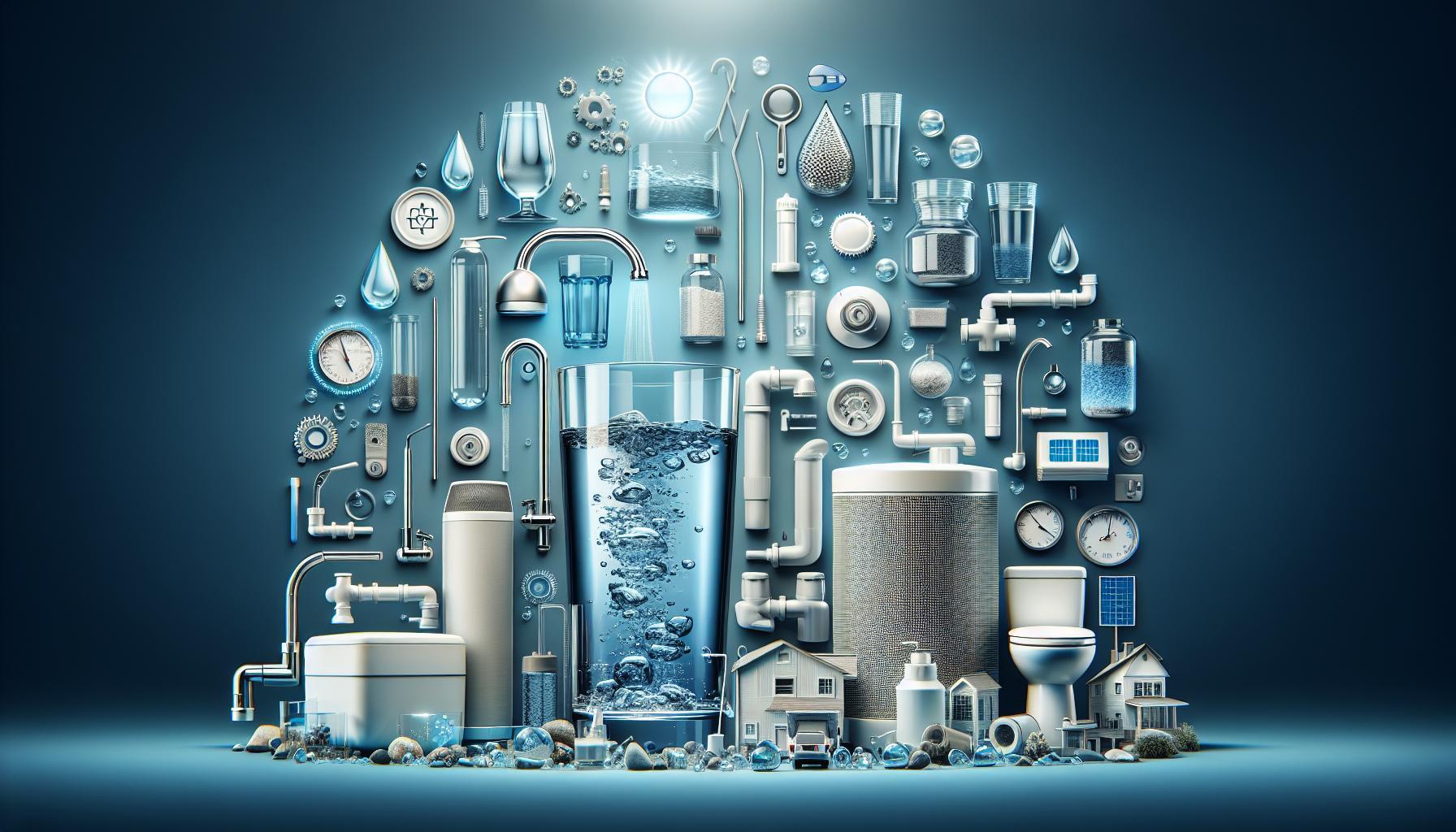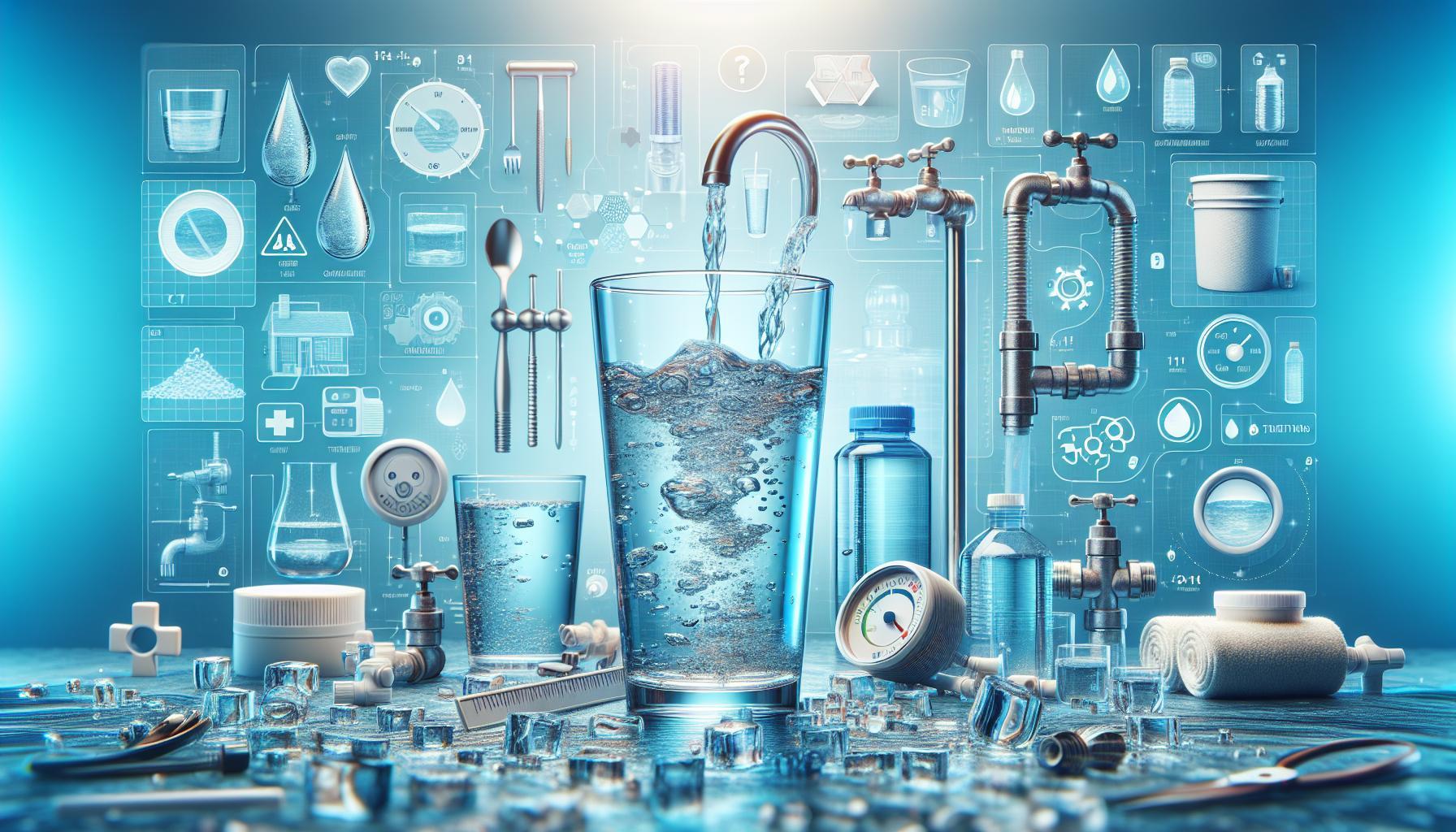Have you ever taken a sip of water and noticed a strange metallic taste? This unsettling experience can signal potential health risks that shouldn’t be ignored. Understanding what causes this flavor is essential for your well-being, as it may indicate contamination or other underlying issues that could impact your health. Let’s explore the implications of metallic-tasting water and what it means for you.
Understanding the Source of Metallic Tastes in Water
The experience of tasting metallic water can leave many individuals puzzled, and understanding the source of this phenomenon is crucial in addressing concerns about its safety. Metallic tastes often stem from a variety of factors that can influence the quality of your drinking water. By identifying these sources, individuals can take appropriate measures to mitigate any potential health risks.
Common Sources of Metallic Tastes in Water
Several elements can contribute to the metallic perception in water, including:
- Corrosion of Pipes: Older plumbing systems made of metals like copper or iron can corrode over time, releasing small particles into the water supply. This process is heightened when water becomes more acidic or if it is stagnant for a prolonged period.
- Mineral Content: High levels of naturally occurring minerals such as iron, zinc, or manganese in groundwater can impart a metallic flavor, especially if water is sourced from wells.
- Water Treatment Chemicals: Certain chemicals employed in water treatment processes can also contribute to unpleasant tastes. For instance, chlorine or other disinfectants may react with organic materials in water, leading to a metallic aftertaste.
- Environmental Contamination: Industrial runoff or leaching from landfills can introduce heavy metals like lead or cadmium into local water supplies. These substances not only taste metallic but can pose serious health risks.
Why Testing is Essential
Understanding how water becomes contaminated with metal traces is paramount, but it’s equally important to take action if metallic tastes are detected. Regular testing can uncover potential health risks associated with contaminated water. Home water testing kits are available and can provide insight into the specific metals present in your supply. You may also want to engage local water authorities to obtain water quality reports.
| Metal | Common Sources | Potential Health Risks |
|---|---|---|
| Lead | Corroded pipes, household plumbing | Nerve damage, developmental issues in children |
| Copper | Corrosion of copper pipes | Nausea, gastrointestinal distress |
| Cadmium | Industrial discharge, contaminated water | Kidney damage, weakened bones |
Mitigating the issue of metallic tastes involves proactive measures such as replacing outdated plumbing, utilizing water filtration systems, or even installing water softeners to balance mineral levels. Awareness of the critical factors leading to metallic tasting water can help individuals transition into a more informed and responsible water consumption routine, thereby addressing the question of whether metallic tasting water is indeed bad for you.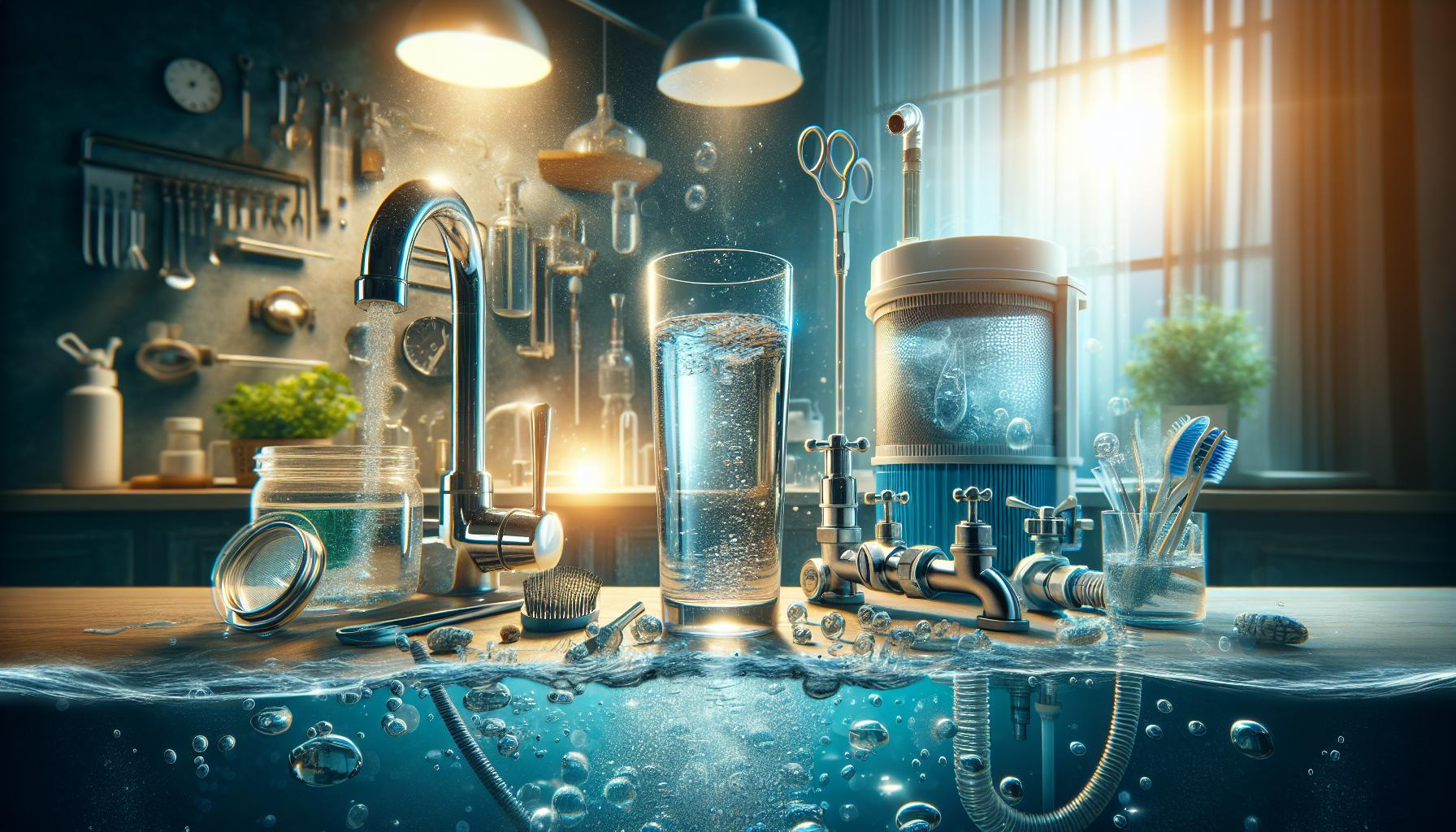
Common Causes: What Makes Water Taste Metallic?
Many people experience the unsettling sensation of metallic-tasting water, which can instantly raise concerns about the quality and safety of their water supply. Understanding the reasons behind this unusual taste is crucial not only for peace of mind but also for recognizing potential health risks. Several factors can contribute to a metallic flavor, ranging from natural elements to infrastructural issues.
Common Causes of Metallic Tasting Water
The underlying causes of metallic tasting water can vary widely, but some of the most prevalent factors include:
- Mineral Content: One of the most common reasons for a metallic taste is elevated levels of specific minerals such as iron, copper, or zinc. These minerals can leach into the water supply from natural sources or aging pipes, which may contain metal contaminants. High iron concentrations can give water a distinct rust-like flavor.
- Corrosion of Pipes: Old or corroding plumbing systems can introduce metals into the water, particularly lead or copper. When water sits in these pipes for extended periods, it can absorb these metals, leading to a metallic taste. Homes built before 1986 are particularly at risk if they still have lead pipes.
- Water Source: The source of your water can also influence its taste. Well water, for instance, may contain higher natural mineral concentrations compared to municipal water sources. Fluctuations in the water table can exacerbate this issue, leading to occasional metallic flavors.
- Water Treatment Chemicals: Municipal treatment facilities often use various chemicals to treat water for safe consumption. Some of these chemicals, when combined or when present in higher concentrations, can impart a metallic flavor, particularly chlorine or chloramine.
Practical Advice for Addressing Metallic Taste
If you find yourself puzzled by metallic tasting water, taking the following steps can help mitigate the issue:
| Step | Action |
|---|---|
| 1 | Check for Pipe Corrosion: Inspect your home’s plumbing system for signs of wear and tear or corrosion. |
| 2 | Test Your Water: Use a home water testing kit or send a sample to a lab to check for high levels of specific minerals and contaminants. |
| 3 | Flush Your System: Run your tap for a few minutes to see if the metallic taste dissipates, as standing water may have absorbed metals from the pipes. |
| 4 | Use Filtration: Install a water filter that specifically targets metallic contaminants, such as reverse osmosis systems or activated carbon filters. |
By understanding the common causes of metallic tasting water, you can effectively address the issue and ensure your drinking water remains safe and pleasant.
Are There Health Risks Associated with Drinking Metallic-Tasting Water?
Drinking water is essential for health, but when it has a metallic taste, it can raise immediate concerns about its safety. While not all instances of metallic-tasting water signal substantial health risks, it’s crucial to understand the underlying causes. Various factors, including the presence of certain metals and other contaminants, can lead to water tasting metallic, which might be more than just a bothersome sensation on the palate.
Understanding the Sources of Metal Taste
Several elements can contribute to water tasting metallic. Common sources include:
- Iron: High levels of iron can leach from pipes and fixtures, especially in older plumbing systems.
- Copper: Like iron, copper can also result from corroded pipes or excessive use of copper sulfate in water systems.
- Lead: Although rare, lead contamination from old pipes is a serious concern, often leading to health complications.
When these metals accumulate in water supplies, they can not only alter flavor but also pose health risks. For instance, long-term exposure to high levels of lead can lead to neurological issues, particularly in children.
Health Risks to Consider
The risks associated with consuming water that tastes metallic often depend on the concentration and type of metal present. Below are some health implications:
| Metal | Potential Health Risks |
|---|---|
| Iron | While essential in small quantities, excessive iron can lead to gastrointestinal issues and organ damage. |
| Copper | High levels can cause nausea, vomiting, and abdominal pain, alongside long-term kidney issues. |
| Lead | Even low amounts can be toxic, leading to developmental problems in children and cardiovascular issues in adults. |
It’s important to note that metallic taste is not always indicative of harmful concentrations of these metals. However, if you consistently notice a metallic taste, it’s wise to have your water tested to rule out contamination.
Practical Steps to Ensure Water Quality
To mitigate potential health risks posed by drinking metallic-tasting water, consider these practical steps:
- Test Your Water: Utilize home testing kits or hire a professional to assess your water quality.
- Flush Your System: Run tap water for a few minutes before using it, especially if it hasn’t been used for a while.
- Install Filtration Systems: Consider filters that specifically target heavy metals if issues persist.
Proactively addressing the quality of your drinking water not only enhances your daily hydration experience but also safeguards your health, minimizing any risks that may arise from contaminants.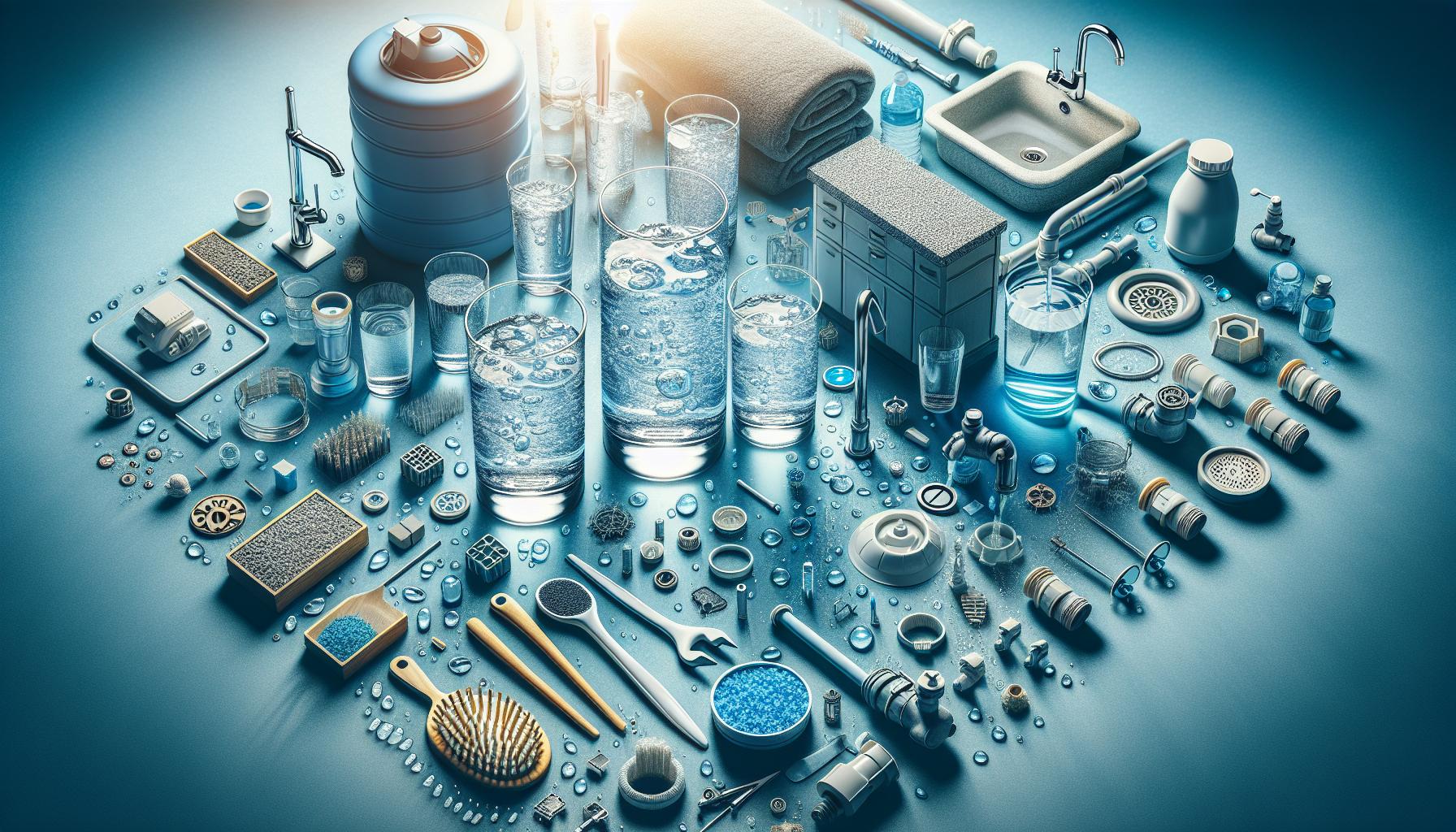
How to Test Your Water Quality: Easy Methods for Homeowners
Understanding the quality of the water you consume is essential for your health and safety. Metallic tasting water can be a red flag, potentially indicating contamination with heavy metals like lead or copper, which may pose serious health risks. Homeowners can take proactive steps to test their water quality effectively, ensuring peace of mind regarding their drinking water safety.
Simple Methods for Testing Water Quality
Testing your water can be both straightforward and cost-effective. Here are several easy methods to consider:
- Home Testing Kits: These kits are available at most home improvement stores. They typically come with the necessary tools and instructions for measuring common contaminants, including metals, bacteria, and pH levels.
- DIY Tests for Specific Contaminants: If you’re particularly concerned about metallic tastes, specific tests (like those for lead and copper) can be purchased individually. Follow the manufacturer’s instructions carefully for accurate results.
- Local Water Quality Reports: Many municipalities provide annual water quality reports to residents. These reports detail the presence of contaminants and can be a good starting point for understanding your water’s safety.
It is vital to interpret the results of your tests accurately. If your tests yield concerning results, such as elevated levels of lead or other harmful substances that may contribute to metallic tastes, it’s crucial to take immediate action.
When to Consider Professional Testing
If DIY methods raise red flags, or if you suspect persistent contamination, contacting a professional for comprehensive testing is advisable. Professionals can conduct detailed analyses using advanced methods that might not be available in consumer kits, giving you a clearer picture of your water quality.
Using these methods, homeowners can effectively monitor their water quality and address any issues that might cause metallic tastes. Regular testing can ensure that you and your family are drinking safe water and enjoying the best quality of life, free from health risks related to poor water quality.
Dealing with Metallic Taste: Practical Solutions and Tips
Experiencing a metallic taste in your water can be unsettling, leading many to wonder, “Is metallic tasting water bad for you?” While the health risks associated with contaminated water should not be overlooked, there are proactive steps you can take to mitigate this unpleasant flavor and ensure your drinking water remains safe and enjoyable.
Understanding the Causes
Before tackling the issue, it’s essential to identify why your water might taste metallic. Some common culprits include:
- Pipes and Plumbing: Aging infrastructure, particularly pipes made of iron or copper, can leach metals into the water supply.
- Water Source: Natural mineral deposits in groundwater or pipe corrosion can introduce a metallic flavor.
- Water Treatment: Certain chlorine or chloramine treatments can occasionally produce off-tastes.
Recognizing these sources will help you understand if it’s a temporary issue or something requiring immediate attention.
Practical Solutions for Better Tasting Water
Fortunately, there are several strategies to reduce or eliminate that metallic aftertaste in your drinking water:
- Filter Your Water: Invest in a high-quality water filtration system. Carbon filters, reverse osmosis systems, and ion-exchange filters can effectively remove metals and other contaminants that contribute to an unpleasant taste.
- Flush Your Pipes: Run the tap for a few minutes before filling your glass. This process can help move stale water out of the pipes that may have absorbed a metallic taste.
- Use a Water Pitcher: Keep a pitcher with a built-in filter in your fridge. This simple solution can enhance taste and ensure you always have fresh-tasting water on hand.
- Store Water Correctly: If you’re using stored water, use non-metal containers like glass or BPA-free plastic to avoid potential leaching of metals into the water.
Additional Tips for Improvement
To further enhance your drinking experience, consider these supplementary tips:
- Infuse Your Water: Adding natural flavors via lemon, cucumber, or mint can mask metallic tastes while keeping you hydrated.
- Check Local Water Quality Reports: Stay informed by reviewing your municipality’s water quality reports to understand what’s in your water supply and how to address any issues effectively.
- Regular Maintenance: Schedule routine checks for your plumbing and water treatment systems to preemptively address any corrosion or contamination issues.
Should you persistently experience a metallic taste, it may be time to consult a local water quality expert or the municipal water authority. Taking these proactive measures not only addresses the immediate concern but reinforces your overall commitment to safe and enjoyable drinking water.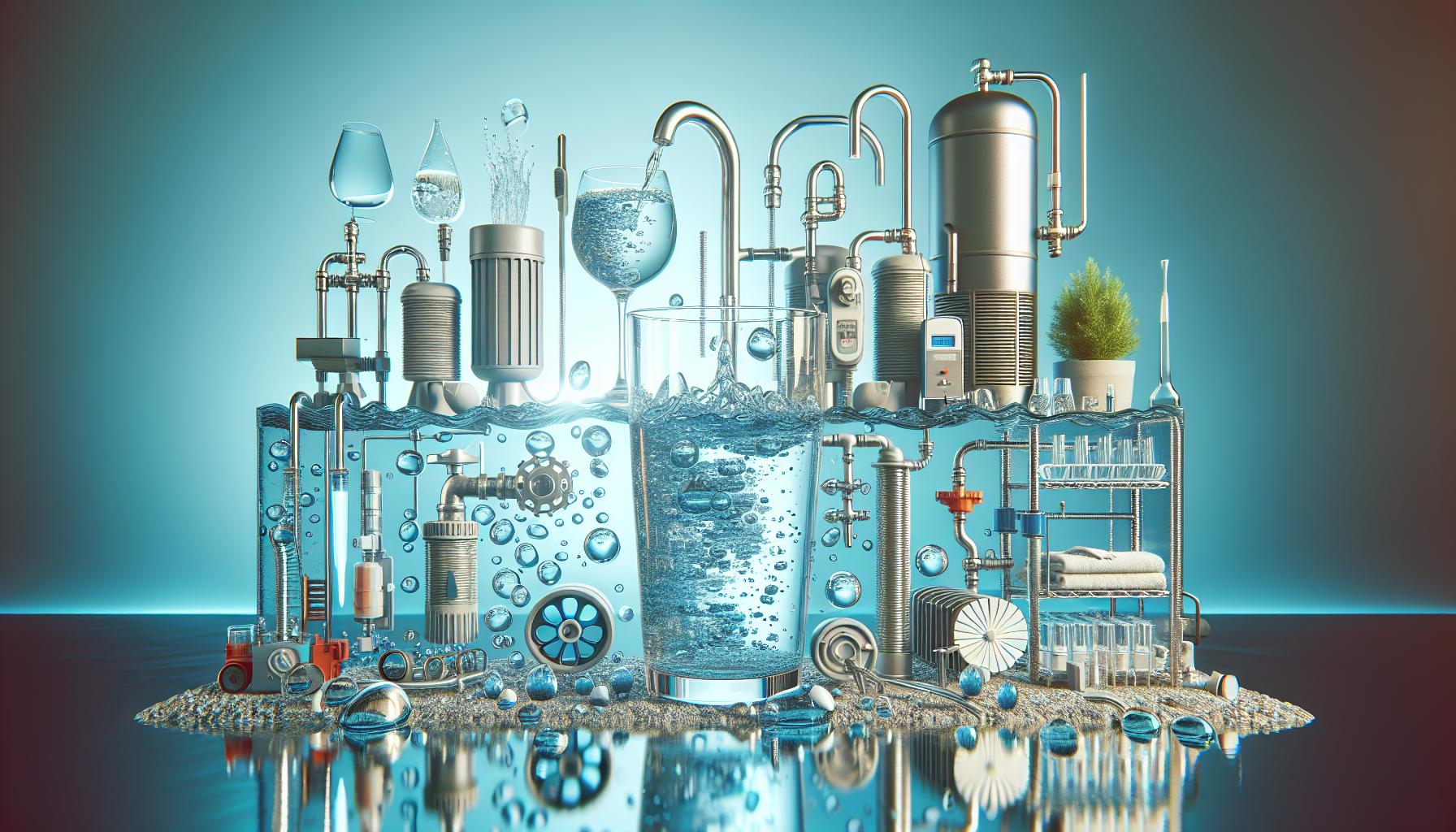
When to Seek Professional Help: Red Flags in Water Quality
Water is essential to our health, but when it comes with unexpected tastes or odors, it can raise immediate red flags about its quality. A metallic taste in water may not just be unpleasant; it can signal underlying issues that need to be addressed promptly. Understanding when to seek professional help for water quality issues is crucial for safeguarding your health and ensuring what you consume does not pose any risks.
Recognizing Warning Signs
Identifying red flags in your water’s quality is the first step in determining whether professional testing or intervention is necessary. Here are some key indicators to watch out for:
- Consistent metallic taste: If the metallic taste persists despite having switched outlets or filtration methods, it’s time to investigate further.
- Discoloration: Water that appears cloudy, yellow, or reddish can signify high levels of minerals or contaminants.
- Odors: A chemical-like smell, especially resembling chlorine or rotten eggs, can indicate the presence of harmful substances.
- Health symptoms: Unexplained symptoms such as nausea, gastrointestinal distress, or rashes can be linked to contaminated water.
Situations Demanding Immediate Attention
There are specific scenarios that necessitate swift action. If you encounter any of the following situations, it is advisable to consult a water quality expert or local health department:
- Old plumbing systems: Homes with aging pipes, particularly lead or copper fixtures, may leach into your drinking water.
- Recent natural disasters: Floods, earthquakes, or heavy storms can disrupt water supply systems and compromise water quality.
- Mold or algae growth: Visual evidence of mold in pipes or algae in reservoirs suggests contamination and potential health risks.
Take Action: Testing Your Water
If you suspect that your water might be compromised, taking action is essential. Home testing kits can provide preliminary insights into specific contaminants, but for comprehensive analysis, consider engaging a certified water testing laboratory. These professionals can evaluate your water’s pH, lead, and other heavy metal levels, giving you a clearer picture of its quality.
| Contaminant | Health Risks | Testing Recommendation |
|---|---|---|
| Lead | Neurological damage, developmental issues in children | Every year for homes built before 1986 |
| Copper | Gastrointestinal distress, liver damage | Every year if metallic taste is present |
| Iron | No major health effects but can cause taste and discoloration issues | Every few years, as needed |
Being aware of these red flags in water quality not only enhances your understanding of potential risks but empowers you to take control of your drinking water safety. If you find yourself wondering, “Is metallic tasting water bad for you?” or concerned about health risks, taking these actionable steps can lead to safer water and better health outcomes.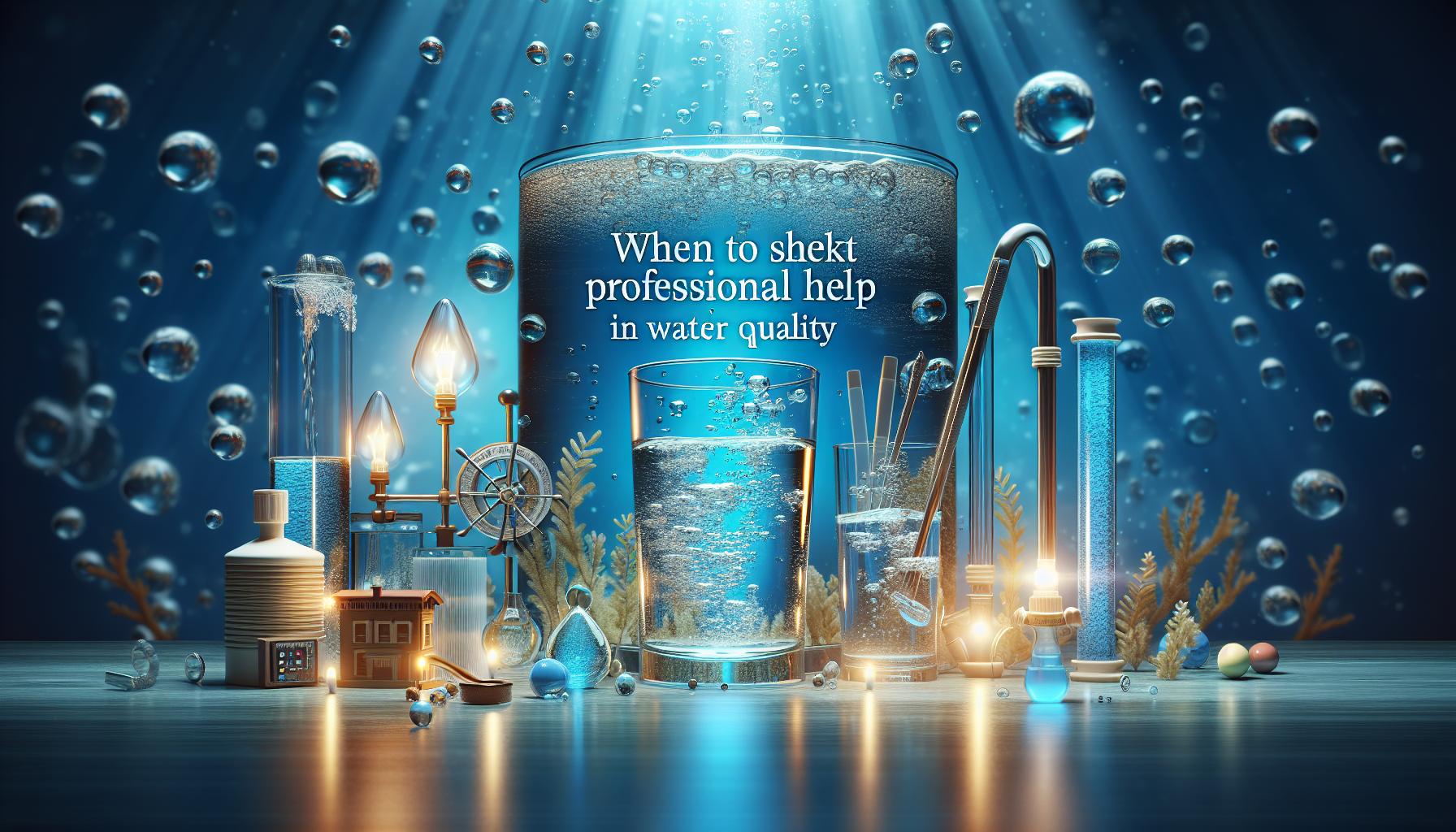
Recommendations for Safe Drinking Water Practices
Understanding the implications of metallic tasting water is crucial for maintaining safe drinking practices. Metallic tastes can originate from several sources, including plumbing materials, minerals in the water supply, or even corrosion of metal pipes. This can raise questions about the safety and quality of your drinking water. Ensuring that your water is not only palatable but also safe for consumption is paramount for your health and well-being.
To mitigate risks associated with metallic tasting water, consider following these actionable steps:
- Conduct Regular Water Testing: Periodic testing of your water can pinpoint specific contaminants. Utilize certified testing kits or hire a professional service to determine the presence of metals like lead, copper, or iron.
- Use Water Filtration Systems: Investing in a reliable water filter can greatly improve water quality. Look for filters certified to remove harmful substances, including heavy metals.
- Flush Your Pipes: If metallic taste arises after water has been stagnant in pipes, it may help to let the tap run for a few minutes before using it for drinking or cooking. This practice decreases the concentration of contaminants.
- Consult Local Water Quality Reports: Familiarize yourself with your local water utility’s quality reports. They’re required to disclose information about the levels of various contaminants, empowering you to make informed decisions.
Understanding Potential Health Risks
Awareness of the health implications of drinking metallic tasting water can guide your actions. While a metallic taste does not always indicate a health risk, it can sometimes be a red flag. For example, long-term exposure to lead can have serious health ramifications, particularly for vulnerable populations such as children and pregnant women.
It’s essential to be proactive. If you suspect your water may pose a health risk, taking immediate actions such as those outlined above can help safeguard your family’s health. Remember, maintaining safe drinking water practices not only leads to better taste but also contributes to a healthier lifestyle—securing peace of mind in every glass you drink.
The Role of Water Filtration Systems in Improving Taste and Safety
Many individuals might not realize that the taste and safety of drinking water are intricately linked to its filtration process. Water sourced from municipal systems or wells can often contain impurities—such as heavy metals, chlorine, or sediments—that contribute to a metallic taste and pose potential health risks. Understanding how water filtration systems can transform the quality of drinking water is crucial not just for enhancing flavor but also for ensuring safety.
Regularly using water filtration systems can significantly reduce contaminants that affect both taste and quality. These systems use various technologies, including activated carbon filters, reverse osmosis units, and UV purification. Each method targets specific impurities:
- Activated Carbon Filters: Effective in removing chlorine and volatile organic compounds (VOCs), improving taste and odor.
- Reverse Osmosis Systems: Can eliminate up to 99% of harmful substances, including heavy metals like lead, which is often a source of metallic taste.
- UV Purification: Destroys bacteria and viruses, providing added safety without altering taste.
For households experiencing unpleasant tastes in their water, investing in a reliable filtration system can lead to noticeable improvements. Many consumers have reported a marked difference in flavor and clarity, showcasing how accessible technology can enhance daily wellness. As a result, the question, “Is metallic tasting water bad for you?” gains priority as not just a matter of taste but also public health. Steps toward improving water safety can start with simple actions like testing water quality and choosing appropriate filtering solutions.
Ultimately, by prioritizing water filtration, users can gain peace of mind knowing that they are not only enjoying better-tasting water but also protecting their health. The adoption of innovative water technologies holds great promise, reflecting a growing awareness of the significance of clean water in daily life. Making informed choices about water filtration can help combat the potential health risks underlying unpleasant tastes, ensuring that drinking water is both safe and enjoyable to consume.
Faq
Is Metallic Tasting Water Bad for You? Health Risks Explained?
Metallic tasting water is usually not harmful, but it can indicate the presence of contaminants. It is essential to identify the source of the taste to ensure your water is safe.
Common causes of a metallic taste include pipes containing iron, copper, or lead, which can leach into the water. While occasional consumption is unlikely to cause harm, prolonged exposure to metals can pose health risks. For more information, consider reading about health risks associated with contaminants.
What causes a metallic taste in water?
A metallic taste in water is primarily caused by metal contaminants such as iron, copper, or lead leaching from pipes.
Factors like corrosion of plumbing materials, water acidity, or mineral content can contribute to this issue. If your water tastes metallic, testing for heavy metals and other contaminants is advisable for safety.
Can I drink water that tastes metallic?
While drinking metallic tasting water occasionally is generally safe, consistency may indicate underlying issues. It is best to investigate the source.
Consider conducting water tests or contacting local water authorities. If the taste persists, installing water filtration systems can effectively reduce contaminants and improve taste.
Why does my tap water taste metallic?
Tap water can taste metallic due to contaminants from pipes or minerals that dissolve in the water supply.
Changes in water chemistry, such as pH levels, can also play a role. Keeping your plumbing maintained and replacing old pipes can help alleviate this issue.
How can I fix metallic tasting water?
To fix metallic tasting water, consider investigating the source and using water treatment solutions. This can include simple steps like running the water for a few minutes.
Installing a water filter or reverse osmosis system can effectively remove contaminants, improving both the taste and safety of your water.
Are there health risks associated with drinking metallic tasting water?
Yes, drinking metallic tasting water can pose health risks if metals like lead or copper are present. Long-term exposure can lead to serious health problems.
It’s crucial to test your water if you notice a metallic taste. Solutions like water filters can mitigate risks and ensure safe drinking conditions.
What should I do if my water has a metallic taste?
If you experience a metallic taste in your water, the first step is to identify the source. Running the tap for a minute might help.
If the issue persists, consider contacting a water quality expert or testing your water for contaminants. Upgrading to a water filtration system can provide peace of mind and improve water quality.
Insights and Conclusions
In conclusion, metallic tasting water can be more than just an unpleasant surprise; it may signal underlying issues that warrant attention. While occasional metallic flavors might stem from harmless sources, persistent taste changes can indicate problems with plumbing, pipe corrosion, or even contamination. It’s essential to stay informed about your water quality and consider testing if you notice changes. Always remember, addressing these concerns can lead to safer, more enjoyable drinking water. We encourage you to explore further, whether that means researching water filtration options or examining your plumbing system. Making informed choices empowers you to protect your health and enjoy the purest water possible. Keep asking questions, and don’t hesitate to seek solutions that make your daily hydration a healthier, happier experience.

